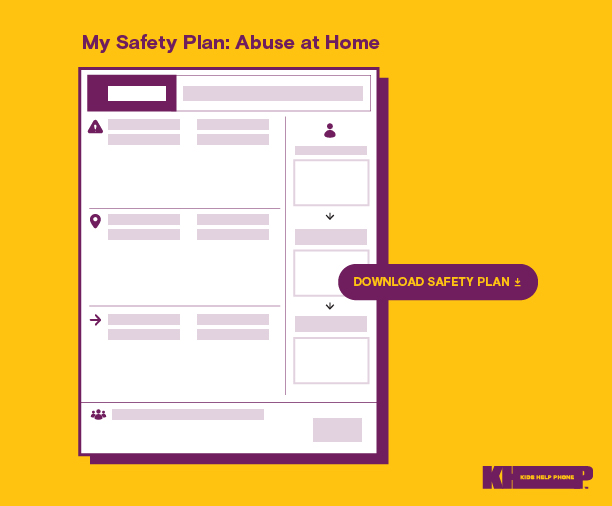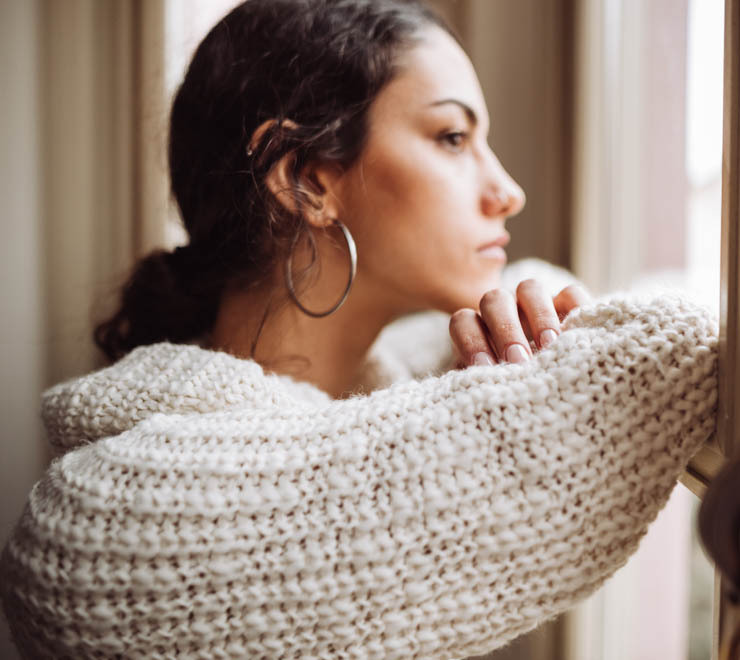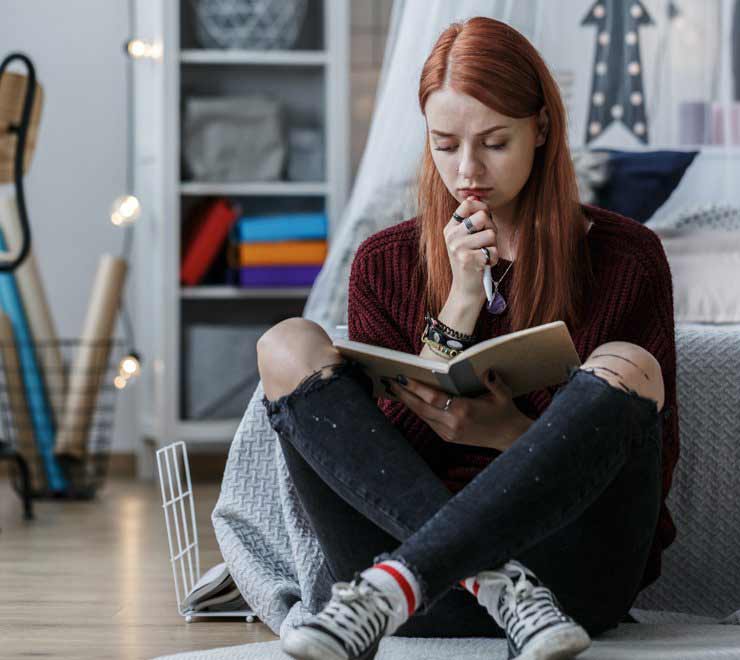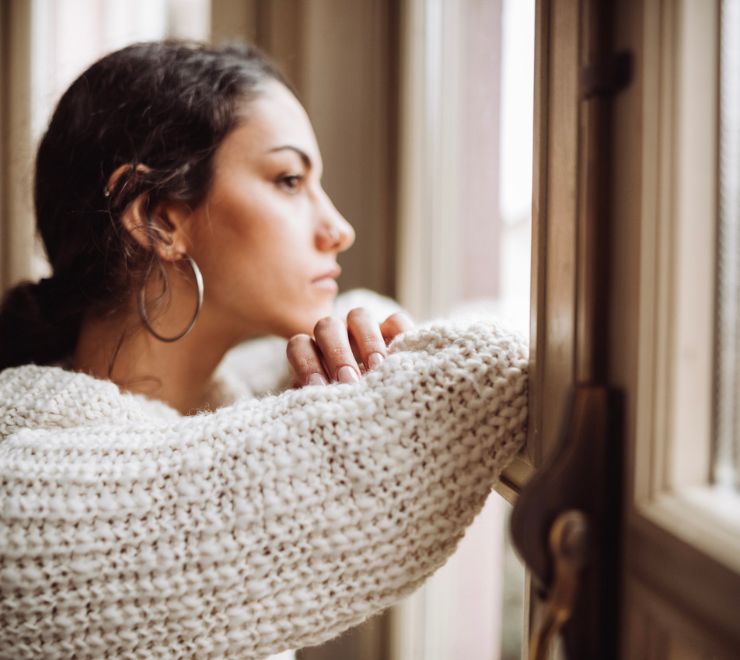If you’re reading this, it’s possible that your living space or home is not a safe place for you right now. If you’re unable or not ready to leave the situation, you can still come up with a plan to create / access safer spaces, even if only for the short term. Any kind of abuse happening in your home is not your fault and you deserve a safe place to live and grow.
You’re not alone. If you need someone to talk to, you can contact Kids Help Phone. Emergency services and child protection services are also available across Canada. Mobile crisis support and other community services are also available in some areas. You can use Resources Around Me to find what’s best for you and available nearest your location.
Not sure if what you’re experiencing is abuse at home? You can learn more about family abuse / abuse in relationships from Kids Help Phone. If you recognize signs of abuse at home, one way you can put your safety first and get support is to create a safety plan. Having a plan may help you be more familiar with what to do in situations where it’s harder to think in the moment, especially when you’re feeling unsafe.
What are some things to consider before getting started?
Here, Kids Help Phone shares prompts you can follow to create a safety plan for when you’re experiencing abuse at home. You can use a safety plan to better know and remember your options to support yourself and put your safety first in the moment. Consider keeping your plan in any private spot that you’ll remember. Some ideas include in a journal or notepad, on a computer / phone / tablet, in a drawer, as a voice recording, in your school bag, under your mattress, etc.
Before creating a safety plan, it can be helpful to consider what “safety” means to you. Safety may look and feel different for everyone. You can start by asking yourself, “What does safety mean to me? Is it a feeling in my body? A place / person / state of mind / gesture?” As you work through the prompts below, it might help you to keep in mind what safety may feel like for you (or how you hope it may feel) and how you can take big or small actions toward achieving that feeling.
The image below provides one example of how you can format your safety plan. You can map out your safety plan in any other way that may work for you, too. As you continue to scroll through this page, you’ll learn more about how to fill it out, including examples. Try to keep in mind this resource isn’t supposed to tell you what to do — you don’t have to do anything you don’t want to do or follow the prompts exactly. This is simply a guide.
You can tap on the image below to download and fill out your own safety plan. You can begin by filling it out on your device and then save / print / take a photo of it. Or you can start by downloading it and then printing a copy to fill out offline. You can also come back to this tool any time if you’re unable to save / print a copy now.
What are some ways to fill out a safety plan for abuse at home?
Notice signs that tell you things are / may be getting unsafe
If things have been challenging at home for a long time, the person(s) who’s being abusive may have specific patterns. Knowing this person’s behaviours, reactions and warning signs — or things that typically lead them to behave a certain way — can be important information to help you know when you might be in danger. Some examples of warning signs that things are getting unsafe might include yelling, physical danger (e.g. hitting, throwing, a fire, etc.), someone using substances in a harmful way, you feeling scared, others around you also feeling unsafe, etc. When you notice these warning signs, it may be time for you to leave the situation and go to a different room, connect with support, leave home, etc. if possible.
- Signs that tell me things are / may be getting unsafe:
Consider ways you can create space and take care of yourself in the moment
There are ways to distance yourself from someone in your home even if you can’t leave. To create physical space, you can try to move somewhere in your home where you can be alone and close / lock the door, such as a bedroom or a bathroom, or try going outside (if it’s safe to do so). Distancing yourself may also include reading, colouring, journaling, watching TV, doing your homework, listening to music or a podcast, etc. These activities may subtly let those around you know that you’re busy or unavailable to engage with them. It may help to plan things you can say to distance yourself from someone you feel unsafe around. For example, you could try saying something like, “I’m going to my room to do my homework now,” etc.
If you’re unable to physically distance yourself, you can try to create mental space for yourself by putting headphones on (if you have them) and imagining a wall between you and the person who’s being abusive. You can also try focusing on coping strategies that give you a mental break from what’s happening around you. You may try breathing exercises, grounding techniques or focusing on a hobby. It may be helpful to consider what has helped you in the past.
- Ways I can create space for and take care of myself if I’m experiencing abuse at home:
Connect with people you trust
It can be helpful to surround yourself with people who make you feel safer — in person or virtually. Even if they don’t know exactly what you’re going through, it can be helpful to have people in your life who care about you and support you. For example, you may choose to connect with family / community members, friends, teachers, coaches, Elders, social workers, etc. If you’re comfortable and feel ready, talking to an adult you trust about what’s happening may expand your support system and help you feel less alone.
You may also want to create a code word / signal to use with the people you trust to let them know when you need their immediate support. You can discuss (in advance) what action(s) they should take when you use your code word / signal with them. This could mean having them come pick you up or having them call emergency or other services for you, for example.
- Who I can trust and talk to about abuse:
- A code word / signal I can use to tell someone I trust I need support:
- When I use my code word / signal, I need the person I trust to:
Keep track of safer spaces
Leaving your home for a few hours to spend time in a place where you feel more comfortable may help in situations when you’re having trouble creating a safer space at home or home has become unsafe. Consider what places you can go to in your community. This may include a library, community centre, place of worship, friendship centre, mall, friend’s house, youth shelter, drop-in peer support or mental health resource centre, etc. This could also mean going for a walk / bike ride, spending time outdoors, etc. and coming back home when things may have settled and feel safer. You may consider which spaces are safer at different times of the day and whether any of the spaces in your list could be unsafe at times, too.
- Places I can go that might be safer for me:
Prepare if you need to leave
In case you need to leave home, it may be helpful to have any important information (e.g. phone numbers, locations, etc.) for safer places you can go. You can also spend some time thinking about how you might get there (e.g. walk, bike / scooter, take public transit, ask someone you trust for a ride, etc.), who you’ll tell if you need to leave home (and where they can meet you, if that’s what you want) and what you’ll need to bring with you. If it’s an option for you, you can keep a packed bag somewhere hidden and accessible to you — this could even be stored outside the home in your locker at school, at a friend’s house, etc. You may want to include anything you may need while you’re away from home (e.g. clothes, money, food, transit passes, medications, phone chargers, etc.).
- Important info (e.g. phone numbers, locations, etc.) about places that might be safer for me:
- Ways I can get to a safer place:
- What I will bring with me if I need to go to a safer place:
List your personal / professional supports
Consider keeping a list of all of the people and / or resources you can contact when you’re feeling unsafe. Your list may include family / community members, friends or other safe people as well as emergency / community services, etc. It may help to make note of phone numbers, addresses, directions, hours of operation and any other contact information for your supports. This may help you to access them quickly.
- People / services I can connect with for more support:
You can use Kids Help Phone’s Resources Around Me database to find additional support services nearest your area.
What are some other ways to customize this safety plan?
Identify your limits / boundaries
You’re the expert of your own experience(s). Because you have the best understanding of what your limits are, it can be helpful to reflect on when someone’s words / actions become too much for you. You can add your limits / boundaries to your safety plan at any time, and you can use your plan to take action and feel safer if you reach your limits / your boundaries are crossed.
Remember: You can connect with Kids Help Phone 24/7 about anything on your mind.
Track evidence of abuse
If you’re experiencing abuse at home, it may be helpful to keep a record of any incidents to share with people who can support you. Try to take photos of any physical injuries and keep a journal of any incidents. Documenting the abuse can help you share what you’re experiencing and how often it happens. This may be especially helpful when connecting with community / emergency services or if you need medical attention. Consider saving your records in a private place where the people using abusive behaviour aren’t likely to find / destroy them. If it’s difficult for you to keep information private, you may want to seek support from someone you trust to document / report the abuse.
Practise self-care
It’s common for people to experience physical / emotional responses to abuse. If you’re experiencing abuse at home, you may be feeling anxious, angry, numb, on edge and / or sad and have low self-esteem, physical health issues and more. Everyone responds to the impacts of abuse differently, so it may be helpful to notice how your mind and body are reacting. Practising self-care can be a way to cope with your responses to abuse and take care of your mental health and well-being. Your wellness is important.



















